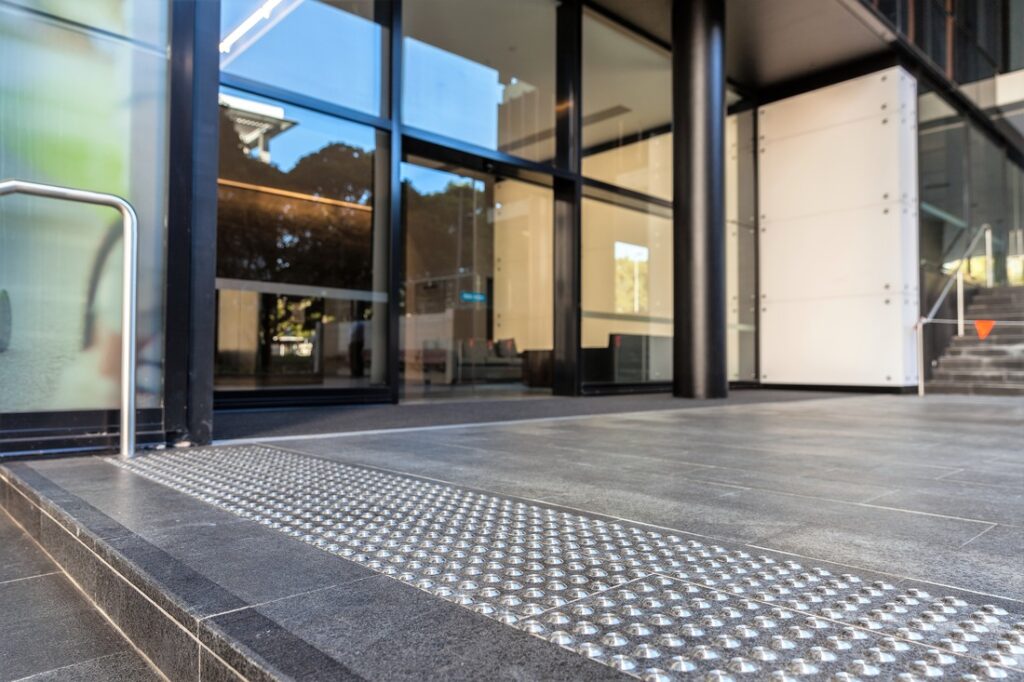In the mid-1960s, Japanese engineer Seiichi Miyake came up with the product Tactile Paving to help blind people walk alone in busy, potentially dangerous environments,but tactile indicators development to date, do you really understand the tactile products?
1. Definition of tactile indicators
The tactile indicator is used in various pavement surfaces as a system of textured ground surface indicator for directional guidance & hazard warning.Found on many footpaths, stairs, shopping malls, airports and train station platforms etc.
2. The structure of the tactile indicators
Tactile indicators are commonly used as raised stud or bar that can be felt through foot. The tactile indicator may take directional or non-directional form.
The directional tactile indicator(also called guidance tactile indicator) is the shape of the strip, which is particularly suitable for guiding blind and vision impaired pedestrians.
The non-directional tactile indicator (also called warning tactile indicator) is the shape of the raised dot and each an array of upwardly extending protrusions for role of warning passers-by.
Please click here to view more different styles of tactile ground surface indicators!
3. Material of the tactile indicators
Due to the specificity of the use scenario, the tactile products are made of hard, wear-resistant materials. These include metals such as stainless steel, brass,bronze or aluminum, and some polymer plastic materials.

